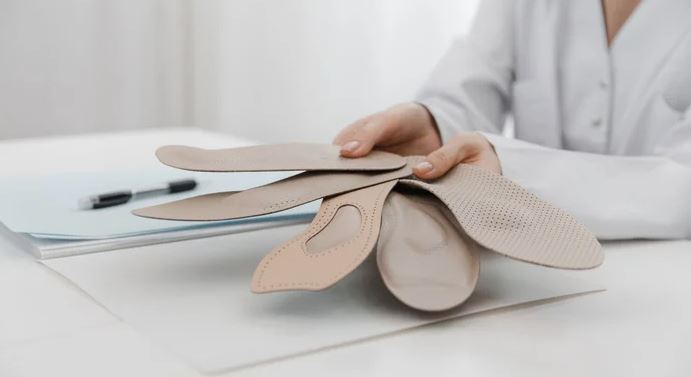THE TYPES OF ORTHOTICS, INSOLES & INSERTS

Orthotics, insoles, and inserts are all types of shoe inserts that are designed to provide additional support and cushioning to the feet. They are often used to alleviate pain, improve alignment, and reduce the risk of injuries. Here is a breakdown of the different types of orthotics, insoles, and inserts available:
1. Custom orthotics:
Custom orthotics are specially made to fit the unique shape and size of an individual's feet. They are typically made by a podiatrist or orthotist, who will take a mold or impression of the feet, and use this to create a pair of inserts that are tailored to the individual's needs. Custom orthotics are often used to treat specific foot conditions such as plantar fasciitis, heel spurs, or flat feet.
2. Prefabricated orthotics:
Prefabricated orthotics are mass-produced inserts that are designed to fit a wide range of foot types and sizes. They are typically made from a mold or cast of a "typical" foot and are available in different sizes and arch heights. They are less expensive than custom orthotics and can be easily purchased from a pharmacy or sporting goods store.
3. Over-the-counter insoles:
Over-the-counter insoles are inserts that are widely available and can be easily purchased from a pharmacy or sporting goods store. They come in a variety of designs, such as those with arch support, cushioning, or shock-absorption. They are less expensive than custom orthotics and can be a good option for those who have mild foot pain or discomfort.
4. Gel or foam insoles:
Gel or foam insoles are inserts that are made from a soft gel or foam material. They provide cushioning to the foot, which can help to alleviate pain and reduce the impact of hard surfaces on the feet. Gel or foam insoles are often used to treat conditions such as plantar fasciitis, heel spurs, and stress fractures.
5. Memory foam insoles:
Memory foam insoles are made from a special foam that conforms to the shape of the foot. They provide cushioning and support, and can help to alleviate pain and improve alignment. Memory foam insoles are often used to treat conditions such as plantar fasciitis, heel spurs, and flat feet.
6. Arch support insoles:
Arch support insoles are inserts that provide extra support to the arch of the foot. They can help to alleviate pain and improve alignment, and are often used to treat conditions such as plantar fasciitis, heel spurs, and flat feet.
7. Heel cups:
Heel cups are inserts that are designed to provide extra cushioning and support to the heel. They can help to alleviate pain and reduce the risk of injuries, and are often used to treat conditions such as heel spurs, plantar fasciitis, and Achilles tendonitis.
8. Metatarsal pads:
Metatarsal pads are inserts that are designed to provide extra cushioning and support to the ball of the foot. They can help to alleviate pain and reduce the risk of injuries, and are often used to treat conditions such as metatarsalgia and Morton's neuroma.
Conclusions
It's worth noting that not all orthotics, insoles, and inserts are suitable for everyone. It's important to consult a podiatrist or other medical professional to determine the best type of insert for your specific needs. They can help to evaluate your foot structure and gait, and provide recommendations for the best type of inserts for your needs.
In conclusion, shoe inserts can become a smart investment for the good health of your feet. Find a perfect model for you with the help of our recommendations.
















